Protecting unique island ecosystems
Voices for the Islands: Thirty Years of Nature Conservation on the Salish Sea
by Sheila Harrington
Victoria: Heritage House, 2024
$34.95 / 9781772034929
Reviewed by Jack Little
*

In his book on the island of Rhodes, Lawrence Durrell claimed that for islomaniacs the “mere knowledge that they are on an island, a little world surrounded by sea, fills them with an indescribable intoxication.”[1] Poetic license aside, many people are attracted to the Gulf Islands with their mild climate, picturesque views, freedom from traffic jams, and ready accessibility to hiking trails as well as beaches. Responding to the growing population pressure, the provincial government in 1974 created the Islands Trust Council, comprised of elected representatives from the thirteen largest islands, with the mandate to “preserve and protect” their “unique amenities and environment for the benefit of residents of the trust area and of British Columbia generally.” The Trust is still handicapped, however, by its lack of authority to prevent the logging of fragile ecosystems.
These islands are familiar territory for Sheila Harrington, the author of Voices for the Islands, for she co-edited Islands in the Salish Sea: A Community Atlas in 2005, as well as Giving the Land a Voice: Mapping Our Home Places in 2010. Having lived on Salt Spring Island as the founding executive director of the Land Trust Alliance of BC, she now lives on Lasqueti Island. This thoroughly researched, richly illustrated, and engagingly written book is timely because, as Harrington notes, the generation of highly committed and remarkably successful environmental campaigners who began to organize themselves approximately three decades ago is now beginning to pass on. Furthermore, the challenge to the Island Trust’s mandate has never been greater due to the growing population pressure and impact of the housing crisis on these islands, as well as elsewhere in the country.
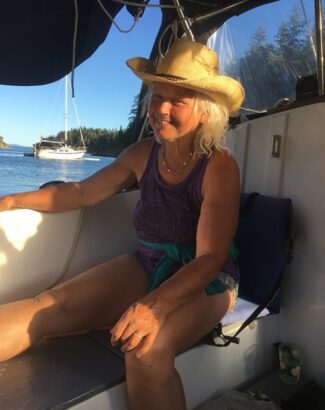
Based largely on oral interviews, recorded over a three-year period as the author sailed from island to island, Voices for the Islands is largely the story of the local conservancies that were created to preserve from development land that has special ecological or scenic value. This book will be of primary interest to the people who live on the islands, either seasonally or year-round, but it should also inspire residents of rural communities elsewhere because it demonstrates what can be accomplished by grass-roots organization. That said, the Gulf Islands are somewhat unique, not only from an ecological perspective, but also because of the number of retired biologists, geographers, and related professionals who became leading figures in the conservancies. And then there are the wealthy families with the means to make substantial financial donations to land preservation campaigns, not to mention the sizeable acreages they have either transferred to conservancies or covenanted for preservation.
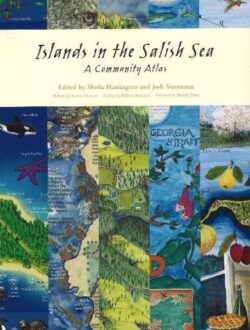
Harrington devotes a separate chapter to each of the fifteen largest islands, namely Gabriola, Thetis, Salt Spring, North and South Pender, Saturna, Mayne, Galiano, Hornby, Denman, Quadra, Cortes, Savary, Bowen, Gambier, and Lasqueti, in that order. The stories are similar in many respects, insofar as they are mostly about creative and persistent fundraising efforts, yet each one is distinctive because of the physical nature of the island in question as well as its settler history and the personalities involved. It is not possible to do justice to all of the islands in a book review, so I will focus briefly on five – Salt Spring, Galiano, Bowen, Hornby, and Savary – in an attempt to capture some of the flavour of the book. I confess to some partiality in making this selection insofar as – being a bit of an islomaniac myself – I’ve lived on three of the islands I selected, namely Hornby as a summer resident for a decade, Bowen full-time during the following decade, and now Salt Spring for the past seven years.
Environmental protectionism began relatively early on Salt Spring, the largest of the Gulf Islands with a population of approximately 12,000. The first anti-logging protest took place in 1990 when the Weldwood forestry company contracted a smaller company to begin clearcutting its 301-hectare (743 acres) property on the slopes of Mount Bruce. Not mentioned by Harrington is the fact that a collective of environmental radicals known as Green Islands led the campaign that culminated with damage to the engines of fifteen heavy-logging machines. A group of local women adopted a less confrontational and more successful strategy four years later when they formed the Salt Spring Island Conservancy. Their first campaign raised $150,000 (from two donors) towards the $850,000 purchase and conservation of the 65-hectare (160 acres) Mill Farm which has rare stands of old-growth trees.
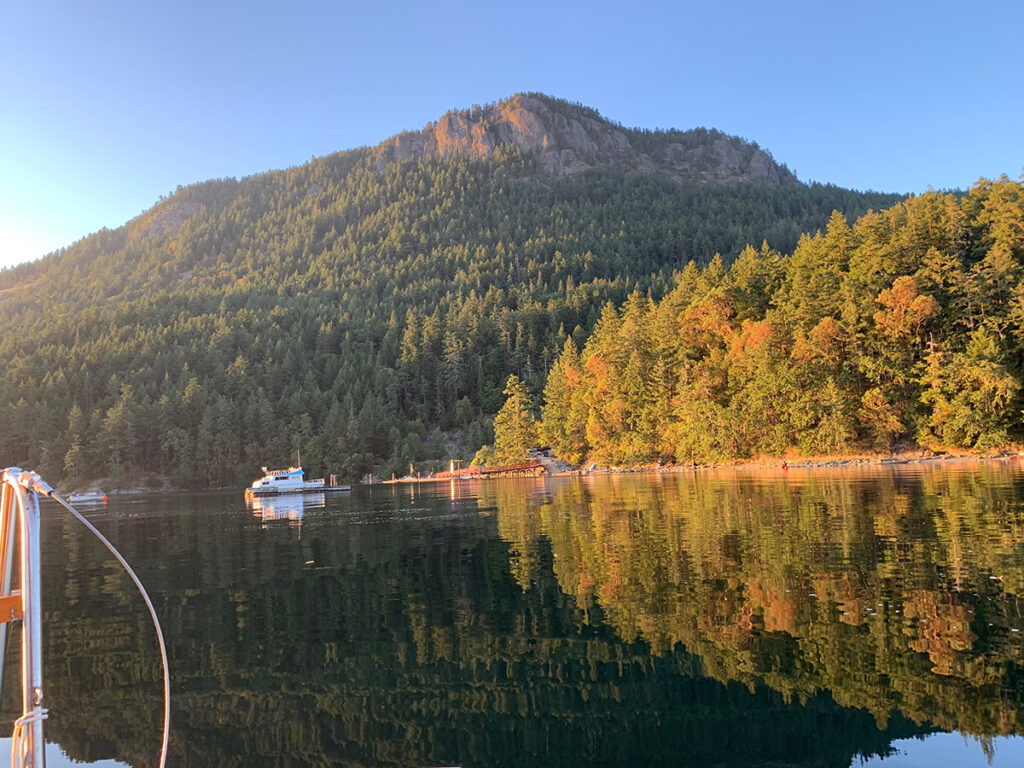
Another anti-logging protest erupted in 1999, however, when two Vancouver developers incorporated the Texada Land Company to log the forests of the 2,248 hectares (6,000 acres) they had purchased in the Burgoyne Bay area. The fundraising campaign launched by Salt Spring Appeal reached a national and international level, raising $1 million by 2002. In addition, political pressure was applied by public demonstrations in Victoria and Vancouver, as well as by logging-road blockades and organizer Briony Penn’s famous Lady Godiva ride down Vancouver’s Howe Street. As a result, government agencies at the regional, provincial, and federal levels contributed most of the $15.9 million paid to the Texada Land Company for 983 hectares (2,428 acres) to be dedicated to conservation and public parkland. A number of important acquisitions have followed, the largest being 150 hectares (372 acres) of provincial parkland and nature reserve on Mount Erskine, the 128-hectare (316 acres) Alvin Ingridson Nature Reserve, and, in the past year, 161 hectares (398 acres) of forest on Reginald Hill. In addition, stewardship agreements with private landowners have protected another 597 hectares (1,476 acres) on Salt Spring.

On nearby Galiano Island, residents were galvanized to form their conservancy as early as 1989 when the MacMillan Bloedel Company, which owned 60 percent of the island, began to subdivide the property for development, having long profited from preferential taxes as industrial forest land. The asking price of $20 million was beyond the reach of the community, but separate pieces were subsequently purchased for preservation and parkland, beginning with 70 hectares (170 acres) at Bodega Ridge and 84 hectares (208 acres) on Mount Galiano. Led by the indefatigable Ken Millard, the Galiano Conservancy committed itself in 2012 to contributing half of the $4 million paid for a 76-hectare (188 acres) property that would create a protected link across the width of the island. The Conservancy was able to raise only $1 million, however, resulting in a crippling debt that it had to carry for years. Since recovering, it has been able to employ nine permanent staff who offer diverse programmes related to wildlife conservation, renewable energy, sustainable food systems, restoration, and environmental education.
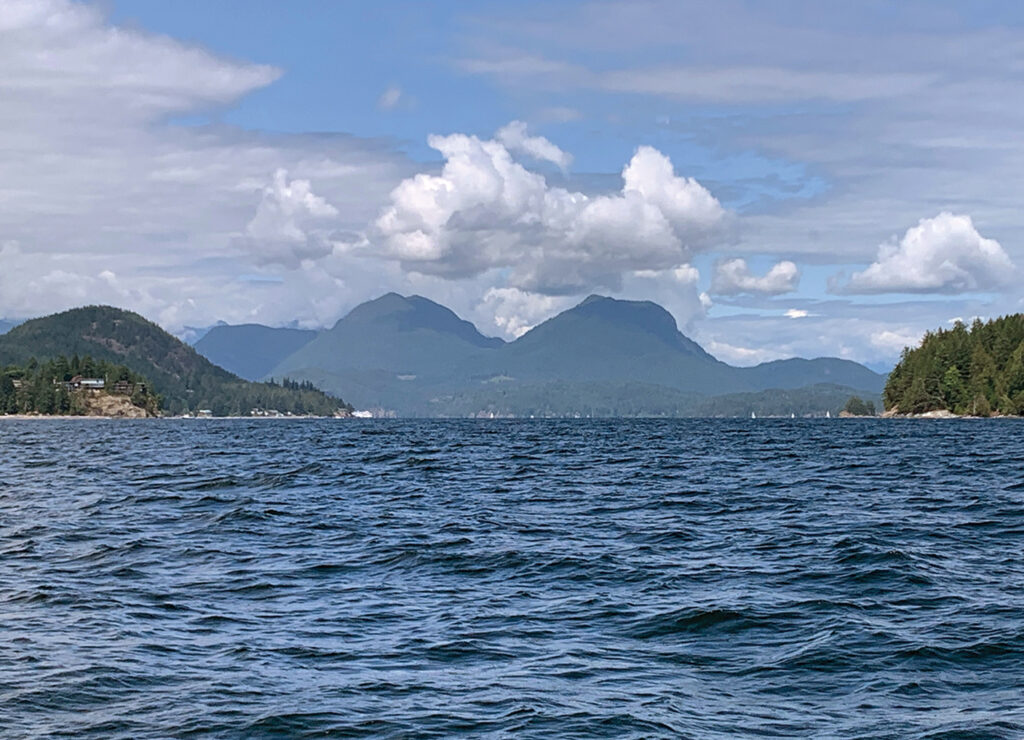
Further north, mountainous Bowen Island, with its large sandy beach at Snug Cove, became a tourism mecca for Vancouverites soon after that city was born. Population growth was not a major concern until the early 1970s, however, when property developer Stan James planned to build 3,000 housing units as well as a large golf course on the former Union Steamship Company property, thereby effectively making the island a suburb of West Vancouver. Local protestors, led by the Bowen Island Improvement Society, pointed to the limited water supply and the issue of sewage disposal on that rocky terrain, but (not mentioned by Harrington) it was the downturn in the housing market during the early 1980s that bankrupted James and ultimately resulted in the creation of the 240-hectare Crippen Regional Park.
The Bowen Island chapter also describes a more recent environmental campaign on the opposite side of the island at Cape Roger Curtis, within sight of Vancouver. One of the main aims of the Bowen Island Conservancy, established in 1997, was to protect the unique ecosystems and environmentally sensitive areas within those privately owned but undeveloped 255 hectares (631 acres). The ultimate goal was to purchase the property for conservation, but before the funds could be raised a development consortium acquired it in 2004. Largely overlooked by Harrington is the rather bitter community division that emerged after the company proposed donating half of the land for preservation and parkland in return for having the zoning on the other half revised to accommodate a village of 480 dwelling units plus community service buildings and an 80-room inn. After refusing to meet the Bowen municipal council half-way, the developers logged wide swathes for a road network to serve 59 ten-acre very expensive lots. And to rub salt in local wounds, five very lengthy steel docks were built on the wind-swept southwestern coastline before the municipality was able to deny further permits. As Harrington recounts, however, the Conservancy has now acquired three of the waterfront lots to be preserved as the Wild Coast Nature Refuge. Metro Vancouver’s recent purchase of an adjoining lot for a public campground has proven to be much less popular, and the Conservancy has offered to repurchase it for $30 million.
Still further north, on Hornby Island with its sandy beaches, the number of tourists now triples the number of residents on summer days. Located between Helliwell and Tribune Bay Provincial Parks, fittingly described by Harrington as gems of the Salish Sea, lies the large strata waterfront property known as High Salal Ranch. Conservancy Hornby Island, founded in 1991, engaged in a protracted struggle to prevent the strata’s development from infringing on what is said to be the province’s largest Garry oak grove. More successful was its campaign culminating in the creation of the 170-hectare (420 acres) Mount Geoffrey Escarpment Park in 2004. It adjoins the 336-hectare (830 acres) Mount Geoffrey Regional Nature Park, as well as 400 hectares (988 acres) of crown land. If one includes that crown land, approximately 36 percent of the island is now protected from developers. More recently, the Conservancy launched the Marine Conservation Initiative to preserve what is the last major herring run on the coast, as well as the rapidly declining rockfish population and other species.
Our last example, Savary Island, is ecologically unique among the islands in the Salish Sea because of its rare dune ecosystem and large old-growth cedars. The island was not among those included in the Islands Trust, however, apparently because of the planning challenges posed by its subdivision into 1,700 mostly city-sized lots in 1910. As Harrington informs us, the result has been that there are now 1,000 developments on what is effectively an unregulated shifting sandbar, the exception being a single 137-hectare (350 acres) unsubdivided lot in the centre of the island. In 1995 the owners slated it for a 90-parcel gated community featuring a private airport, but Savary Island Land Trust emerged to meet that challenge. After a lengthy campaign, it succeeded in having half the lot purchased for preservation in 2002, and the other half in 2017, with the title being held by the Nature Trust of BC.
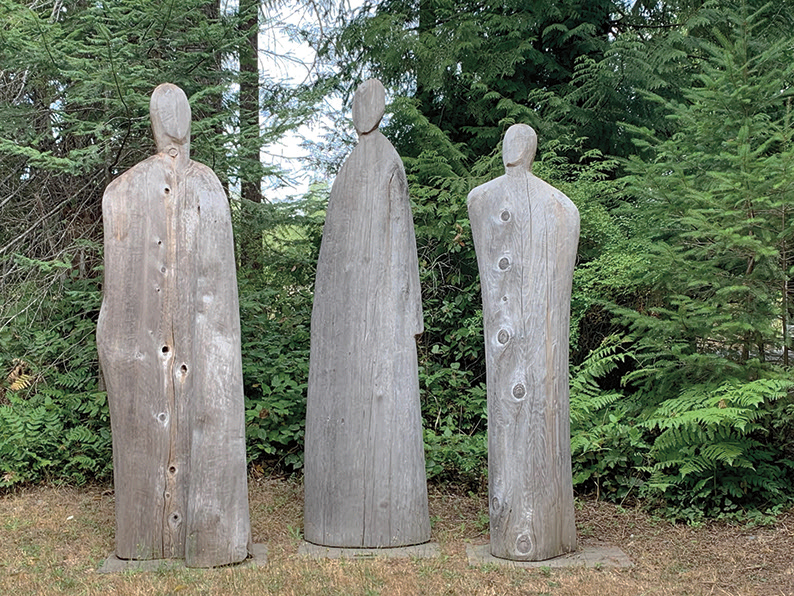
Finally, Harrington describes how steps are now being taken by Salish Sea conservationists to move beyond the individual island level. The best example is the recognition in 2021 of Howe Sound as a UNESCO Biosphere Reserve, largely through the efforts of environmentalists such as Ruth Simons of Lions Bay and Bob Turner of Bowen Island. Not only have dolphins and three species of whales returned following the closure of the Woodfibre pulp and paper mill, as well as the cleanup of the acid effluent from Britannia Beach’s long-shuttered copper mine, but extremely rare glass sponge reefs are now being discovered in the deep waters of the Sound. As Harrington’s very informative book demonstrates, then, the story of the past three decades and more has been an inspiring one, with many thousands of acres on the Gulf Islands preserved in their natural state. It will be up to a new generation facing a growing environmental crisis to protect and expand upon the gains that have been made in the last three decades.
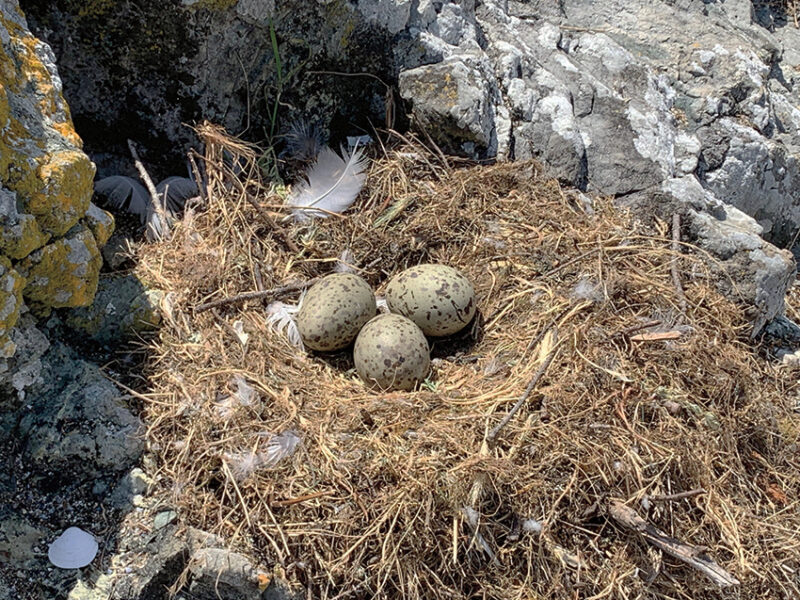
*

Jack Little is Professor Emeritus at the Department of History at Simon Fraser University. He is the author of many books including the recent Reading the Diaries of Henry Trent: The Everyday Life of a Canadian Englishman, 1842-1898 (2021) and At the Wilderness Edge: The Rise of the Antidevelopment Movement on Canada’s West Coast (2019). He is retired and lives on Salt Spring Island.
*
The British Columbia Review
Interim Editors, 2023-25: Trevor Marc Hughes (non-fiction), Brett Josef Grubisic (fiction)
Publisher: Richard Mackie
Formerly The Ormsby Review, The British Columbia Review is an on-line book review and journal service for BC writers and readers. The Advisory Board now consists of Jean Barman, Wade Davis, Robin Fisher, Barry Gough, Hugh Johnston, Kathy Mezei, Patricia Roy, Maria Tippett, and Graeme Wynn. Provincial Government Patron (since September 2018): Creative BC. Honorary Patron: Yosef Wosk. Scholarly Patron: SFU Graduate Liberal Studies. The British Columbia Review was founded in 2016 by Richard Mackie and Alan Twigg.
“Only connect.” – E.M. Forster
[1] Quoted from Donovan Hohn, “These Little Worlds,” Harper’s Magazine, July 2024, 15.
2 comments on “Protecting unique island ecosystems”
An excellent review…I’ll certainly be reading the book. I did notice these two examples of ‘conflict’ not mentioned by Sheila Harrington…
“Not mentioned by Harrington is the fact that a collective of environmental radicals known as Green Islands led the campaign that culminated with damage to the engines of fifteen heavy-logging machines. A group of local women adopted a less confrontational and more successful strategy four years later when they formed the Salt Spring Island Conservancy.
and
Largely overlooked by Harrington is the rather bitter community division that emerged after the company proposed donating half of the land for preservation and parkland in return for having the zoning on the other half revised to accommodate a village of 480 dwelling units plus community service buildings and an 80-room inn.”
My own Island of Denman has had a tumultuous preservation history as well…I’ll wait and see if it was also not mentioned.
There is a whole chapter on Denman, Bill, and I will be there giving a reading this coming Thursday night at 7 at the Activity Centre.
While I do mention both these conflicts very briefly, I don’t get into the details. My purpose was to talk primarily about the successes and the local conservation groups.